#Iditarod Trail
Explore tagged Tumblr posts
Text
Prof! Aragorn who frequently and flagrantly misuses sabbaticals "for study purposes". He took off a year to train for the Iditarod. He hiked the Pacific Crest trail. He backpacked across Europe. He tells his students he'll be reachable by email, but just straight up disappears. He comes back with a new batshit insane trinket for his office (he purposely tries to get something weird cause he likes when students ask about his silly stuff). He doesn't tell most people what he's up to either, he says it's a strictly need to know basis like its a big secret, but really he's just going to study an area for an upcoming book.
#his students have to ask a different professor to get any info about why he's going to be gone for a semester#he's so SILLY#aragorn#modern au#university au#lotr#lord of the rings
94 notes
·
View notes
Text
In honor of the moose/Iditarod rule 34 chaos post reaching 1000 notes and then Dallas Seavy winning the Iditarod here are all the unhinged stories and things I know about that race
They changed the rules and schedules so you can't do this anymore, but there was a subset of mushers who would race the Yukon Quest and the Iditarod back to back. That's a 1000-mile race followed by another 1000-mile race through some of the harshest terrain on earth in late winter. And the Yukon quest doesn't even finish where the Iditarod starts. To do this required putting dogs in a plane OR having another team of dogs waiting in anchorage and someone to deal with both teams of dogs.
The first woman to win the Iditarod was Libby Riddles in 1985.
Only to have her finish promptly blown out of the water by Susan Butcher who won the race in 86', 87', 88', and 90' while setting speed records the whole way.
Susan did race in 85' but she ran into a moose early and it killed two of her dogs and hurt the rest so she scratched. Dallas got lucky this year.
She was also the first person to mush a dog team up to the summit of Denali, the tallest mountain in North America. This is not what dog teams are intended to do, I don't know why she even wanted to, other than to prove it was possible. I don't think anyone has since.
The race now requires GPS trackers on all the racers and you would not believe the bitchfit everyone threw over those. Mushers can either hop between checkpoints or camp on the trail and it may surprise you to learn that these are the kind of people who have secret camp spots in the woods that they don't want anyone to know about. So now, everyone has acquiesced to the tracker requirement but you must have an account on the race website if you want to see them.
The race has 2 paths that alternate even and odd years with different checkpoints but every year includes a section of race that crosses the sea ice, approximately 50 miles from Shaktoolik to Koyuk. so forget landmarks. point the sled north and hope you're going the right way.
the race is in honor of the 1925 Serum Run and the diphtheria outbreak, but the trail itself is the old freight route which is almost twice the length. also, it's a freight route for hauling freight which means the the racers are going at more or less lightspeed as compared to the intended use.
the most effective way to avoid frostbite on your face is a fur hood and duct tape on your cheeks and nose. Cold-related injuries are rare but far from unheard of. The average number of toes and fingertips among mushers is lower than that of the general population.
The finish line is a massive burled arch in the middle of main street in Nome. There is not a lot going on in Nome at any given time and this time of year is the exception. Every racer who finishes the race gets the same reception, which is everyone in town crowding into the finish chute to cheer them on and the city fire siren going off. The last racer in gets the Red Lantern Award which means that they finished dead last but didn't scratch.
the 2020 race had started and was fully underway when the pandemic lockdowns came into place. as far as social distancing goes, you really can't do much better than being isolated 100 miles into the middle of frozen nowhere but the checkpoints are itty bitty villages with no medical infrastructure and the finish was reportedly terrifying because instead of a crowd to cheer at the burled arch, it was just the siren going off in a ghost town.
there is no way I can tell this story that doesn't sound like I'm making it up as I go. The sign says no sniveling and they fucking mean it.
no really, click that link. here's the YouTube vid (non-graphic, after-the-fact interviews)
204 notes
·
View notes
Text
Things I learnt about Solid Snake from his MGS1 profile:
1. He owns 50 huskies and wanted to partake Iditarod Trail Sled Dog Race before Campbell messed up his day (it was said in the game briefings as well)
2. He has a close friend who is Yupik and taught Snake their language (that's how he knows the tongue and speaks a word with Sniper Wolf)
3. He loves blueberries and salmonberries
4. He suffers from hallucination and PTSD but having dogs helped a bunch
Source: Metal Gear Solid handbook by Konami
#my blorbos tend to love blueberries a lot huh#solid snake#snavid#mgs david#50 huskies#metal gear#metal gear solid
98 notes
·
View notes
Note
How would a caregiver stop an Andalite toddler from trying to eat whatever they step on? Do they have a 'get that out of your hoof' phase?
2. Yes.
Booties. Like the dogs wear on the Iditarod Trail. Given how much human toddlers object to wearing shoes, this goes about as well as you might expect.
112 notes
·
View notes
Text
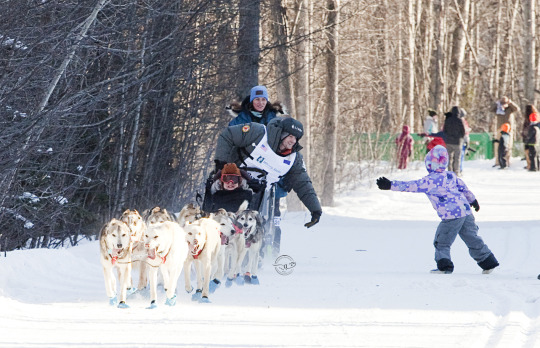
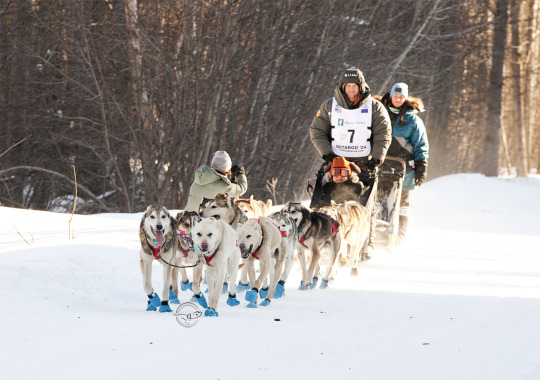
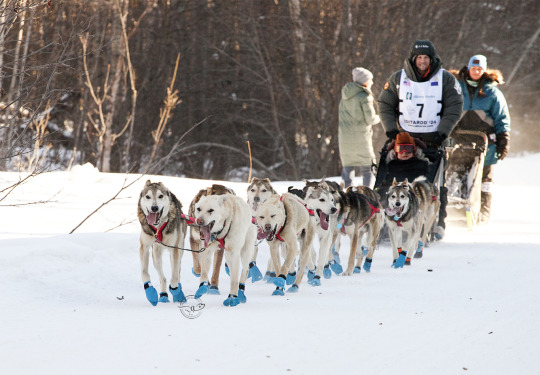

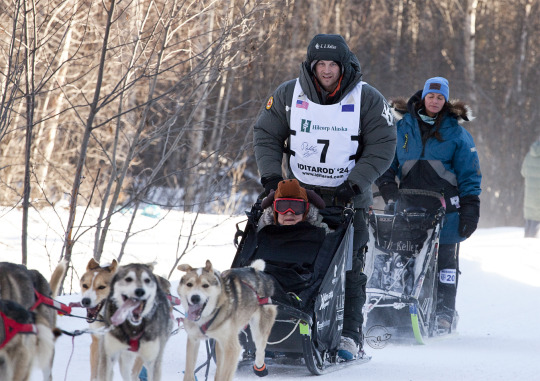
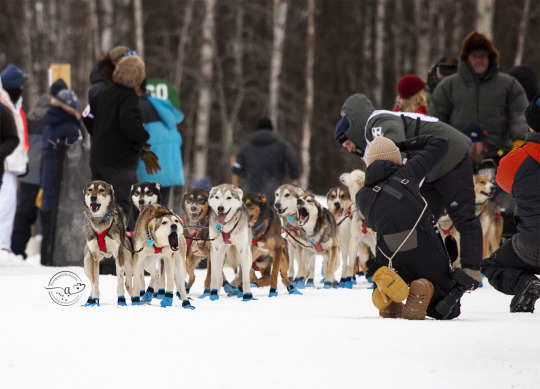
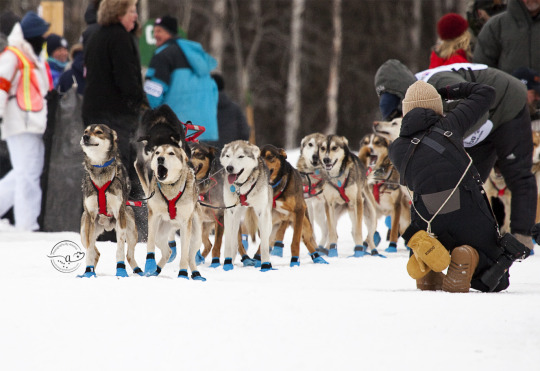
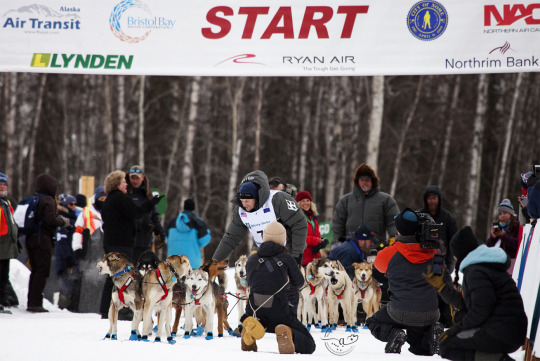
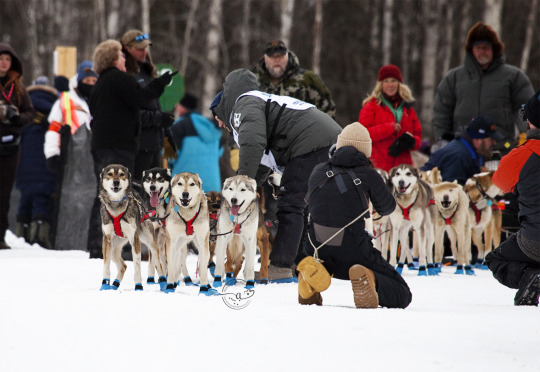

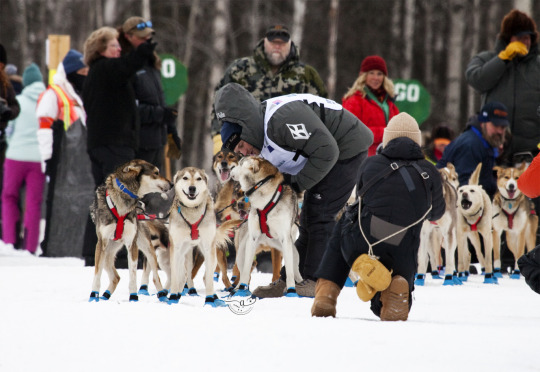
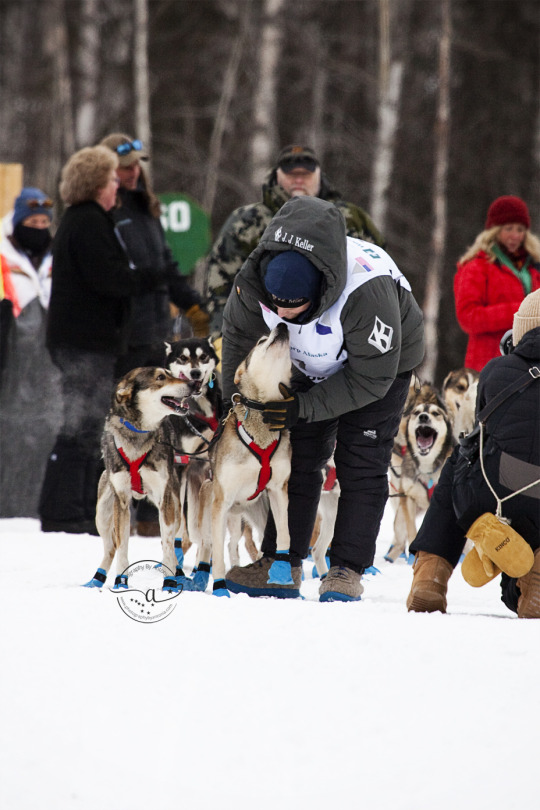
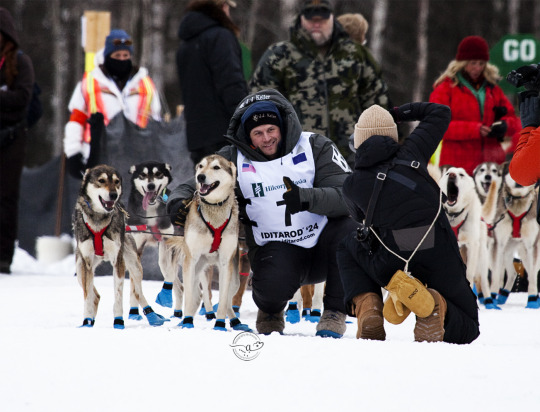
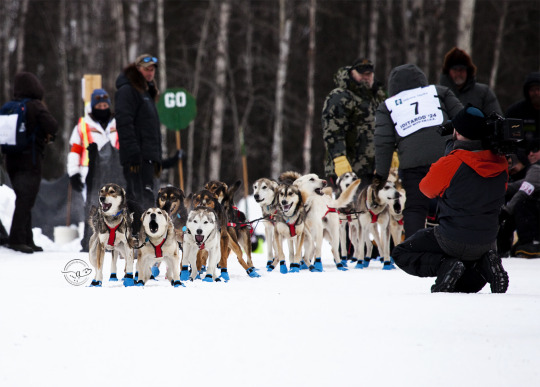
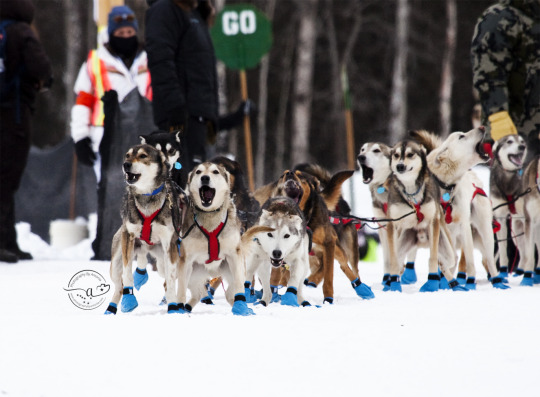
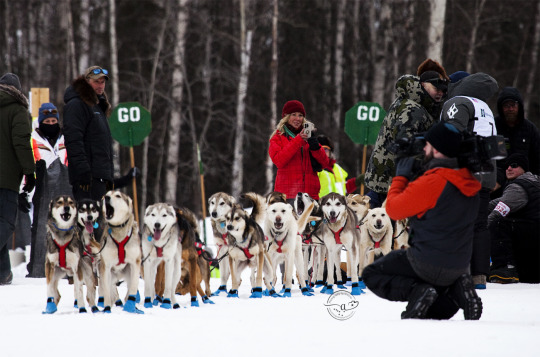
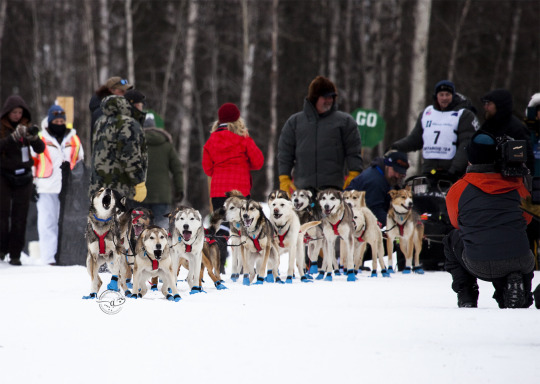
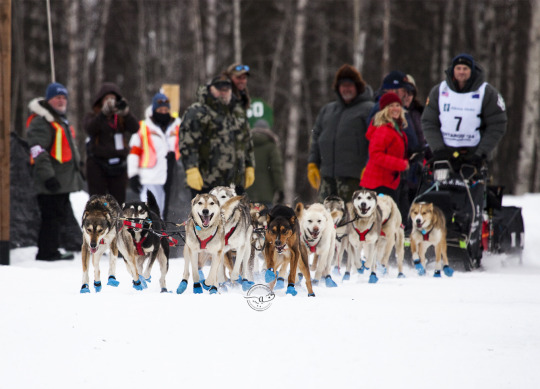
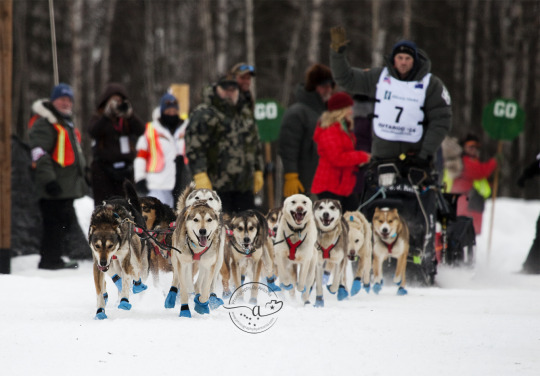

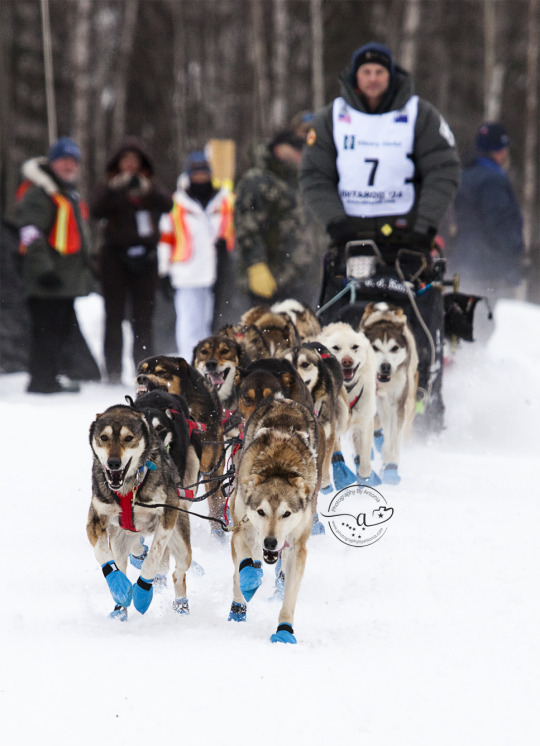
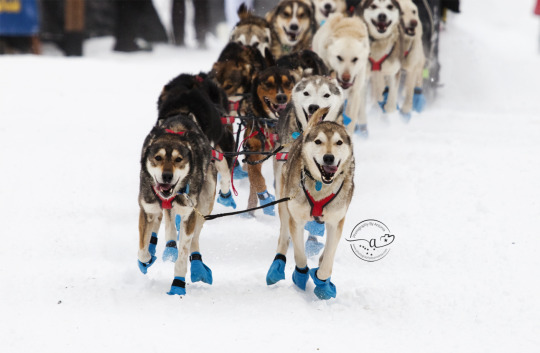
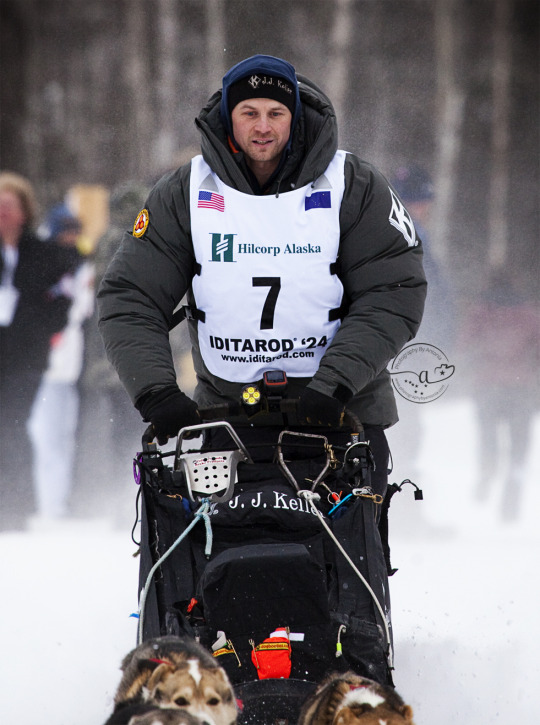
Dallas Seavey at the Ceremonial Start and ReStart of Iditarod 52. Dallas. Seavey. The kid that believed he was on a trajectory for an Olympic career and not a dog mushing one. Oh, sure, he was like many others of his generation who not only grew up in the presence of many great mushers - all the while helping his dad build a successful racing kennel - but one who watched Iron Will and tried to recreate many of the scenes from the movie... but as he often told tourists - he had no desire to make it his life like his dad had.
Then injuries sidelined his Olympic wrestling dream (was on his way to making the 2008 USA team) so he came home and continued helping his dad build monster teams.
After a while running the puppy team just wasn't enough. Puppy teams are competitive and if you know Dallas even a little bit you know the dude is extremely competitive.
He studied like he was working on a Masters Degree. No one knows the science and stats of the race more than Dallas. Guarantee it.
He won his first title in 2012, then again in 2014, 2015, 2016... took a break after his second place finish in 2017 (we won't rehash the whys) and came back in 2021 to win it again (granted the shorter "Gold Loop Trail" - thanks Covid - but he battled the Rainy Pass Pony Mafia so it still is a huge accomplishment). His '21 race meant he tied for most wins, sharing that record with the legendary Rick Swenson. Swenson was one of Dallas's childhood heroes... and Dallas had broken or tied just about every record Rick had.
This year, Dallas won number six. He is the winningest Iditarod Champion.
It wasn't easy. In November he and two of his handlers took teams out on a training run. His handler running many of Dallas's top dogs was hit by a snow machine. Dogs were killed, some injured with career ending, life altering injuries. The mushers were physically all fine, but mentally... mentally it took a while to feel "normal" on the runners.
Dallas borrowed dogs from his dad to make a competitive Iditarod team, it wasn't ideal - but he'd done it before. The Ceremonial Start and ReStart seemed to go on without an issue. Crowds cheered the musher on and he quickly slipped into the routine.
Monday of race week rolls around. Dallas' birthday. Early that morning an aggressive moose plowed into Dallas' team, the only thing for the musher to do was dispatch the moose. If you've followed the race you know what happened next. Dallas did not properly gut out the moose, one of his dogs was injured but it wasn't noticeable right away (dog is fine now), he was penelized for the improper dressing out of the moose. Dallas was not going to win.
Then things changed in the second half of the race. Teams who decided to try to outrun Dallas who was already dealing with time penalties pushed too hard, too long, too soon. Dallas caught up. And then Dallas did what Dallas does.
And now Dallas Seavey is the only six time champion in the history of the race.
That's a wild ride. (see what I did there? no, oh, well.... you can find out what I mean here.)
To view high quality photos, or purchase, click here.
For more see ReittersBlock.com
#dallas seavey#dallas freaking seavey#team seavey#i was team seavey before it was cool#he's still a booger#yeah I fangirled#proud of my friend okay#iditarod#iditarod 52#iditarod 2024#mushing#sports legend#goat#greatest of all time#legendary#legend#seavey#dog sports#dog photography#sport photography#winter sports#alaska sports#sled dogs#dog mushing#alaska#alaska life#iditarod photos#iditarod champion#champion#photography by antonia
102 notes
·
View notes
Text
Does everyone know what's happening in the Iditarod this year?
Quick refresher course: The Iditarod is a 1000-ish mile (1520 km according to Wikipedia) sled dog race held annually in Alaska. It's not abusive to the dogs, the dogs love to run. Most of the problem comes from getting the dogs to stop running.
Dallas Seavey is a 5-time winner, going for his record 6th win. A musher on the trail before him encountered a moose and punched it in the nose. (There is no more information than this.) Dallas encountered a moose (possibly the same moose) that injured a dog on his team. He was forced to shoot the moose.
Iditarod rules state that if a musher kills an edible big game animal, they have to gut it. No other mushers can pass while they're doing this and they're supposed to help gut the animal. The meat goes to the nearest town in Alaska to be eaten, so the moose is going to feed a lot of people.

The race officials, after picking up the dead moose, determined Dallas didn't do a good enough job gutting it and penalized him 2 hours. Everyone has a mandatory 24-hour rest period that they usually take right about now, and he has to wait an extra 2 hours before going back on the trail.
How does one go about gutting a moose? No idea! What makes a moose gutting job not good enough? Also no idea! Is this something Iditarod mushers learn before they go out on the course? Apparently not! But it makes for tons of fun for those of us following online. 😂
Also, most importantly, the dog that was injured was treated and is on her way back home.
66 notes
·
View notes
Text
Entertaining Animal Nonfiction
Nonfiction reads about animals that'll keep you hooked!

The Big Year: A Tale of Man, Nature, and Fowl Obsession by Mark Obmascik
A tale of three birders crossing the continent and vying to become the person in America who identifies the most birds in one year. Tells the tale of a real contest, and how in its craziest year, three birders crawled through dumpsters, hiked the highest peaks, and scraped to get enough money to win the Big Year title.
(Editor's note: As you can probably guess by the cover above, there's also a movie starring Jack Black, Owen Wilson, and Steve Martin!)
The Dragon Behind the Glass: A True Story of Power, Obsession, and the World's Most Coveted Fish by Emily Voigt
A reporter goes on a global tour in search of a wild Asian arowana, the world's most expensive aquarium fish, to find out what about this fish inspires murder, millions of dollars, and plastic surgery on fish, and whether they're still alive in the wild.
Dogland: Passion, Glory, and Lots of Slobber at the Westminster Dog Show by Tommy Tomlinson
Explores the hype and realities of life for humans and dogs in the show ring. The deeper story, though is the rumination on how dogs and humans have changed one another throughout the years, and what we mean to each other.
Four Thousand Paws: Caring for the Dogs of the Iditarod: A Veterinarian's Story by Lee Morgan
This is a rollicking memoir of a veterinarian, one of dozens who volunteer their time each year to come to the frozen tundra and snowdrifts of Alaska. Their mission? To keep safe and healthy the hundreds of dogs participating in the thousand-mile Iditarod Trail Race. It's a tale not just of the extraordinary people who race the trail, but the tenacity and spirit of their dogs, and the incredible coordination that it takes to get veterinarians and support staff flown and ready to take care of canine athletes far from veterinary clinics.
See more of Sarah's recs
#book recs#book recommendations#birding#birdwatching#aquarium fish#westminster dog show#lee morgan#iditarod#sarah's recs#LCPL recs#nonfiction#four thousand paws#dogs#dogland#tommy tomlinson#the dragon behind the glass#Asian arowana#the big year#mark obmascik#booklr
9 notes
·
View notes
Text
Today is a very special and memorable day for me. It was a century ago, in the harsh winter of 1925, a group of brave mushers and their heroic sled dogs raced against time to deliver life-saving diphtheria serum to Nome, Alaska. Facing blizzards, subzero temperatures, and treacherous terrain, these teams covered over 600 miles in just five and a half days, preventing a deadly epidemic and cementing their place in history.
Today marks the day those brave men and their loyal canines begun their journey, one we today call the "Great Race of Mercy" and we honor the courage, endurance, and teamwork of these unsung heroes—both human and canine. Their legacy lives on, not just in the Iditarod Trail Sled Dog Race but in the enduring spirit of resilience and determination that defines the Last Frontier.
Here's to the Nome Serum Run—100 years of heroism, sacrifice, and the unbreakable bond between humans and their loyal dogs. As always, I am honored to join the Iditarod, which, while not running the same path of glory, tests us mushers through the tough conditions those brave souls faced 100 years ago.
If you would like to read more about this day, see here.
#annika speaks#hetalia#hetalia oc#hws#hws alaska#hws states#Great Race of Mercy Anniversary#Thank you to the dogs#Nome Serum Run
7 notes
·
View notes
Text
ANCHORAGE, Alaska (KTUU) - A plane was reported missing near Nome late Thursday afternoon, according to officials.
Jim West, volunteer fire and ambulance chief in Nome, said a plane went down with 10 people onboard.
The plane — a Cessna 208B Grand Caravan aircraft owned by Bering Air — was reported to have been flying from Unalakleet to Nome, according to the Nome Volunteer Fire Department.
The flight took off from Unalakleet at 2:37 p.m., according to Bering Air Director of Operations David Olson.
Data from FlightRadar shows a Bering Air flight last reporting info at 3:16 p.m. over the Norton Sound.
The White Mountain fire chief, Jack Adams, told Alaska’s News Source that the plane disappeared from the radar somewhere along the coast of Nome to Topkok. He also said they have crews actively searching a roughly 30-mile stretch in that area.
“They’re prepared to be out all night, they will search here until they find them or somebody else finds them,” Adams said. “If they don’t find anything, we’ll probably rally another crew to go and help.”
Adams said the sea ice is “kind of jumbled” and hard to traverse, so the ground crews are traveling on the Iditarod trail to search
4 notes
·
View notes
Note
hey! i’m wondering what your thoughts are on the changed iditarod starting point this year? i came across some posts about it on accident and was kinda shocked that sled races can run over sections with no snow at all. is it typical for there not to be enough snow other years as well?
It's become quite common for Iditarod to change the start location (they do a different route on and off every other year anyways), but climate change has affected dog sled racing so Anchorage especially does not often have enough snow for the amount of strain many large dog teams put on a trail. They will often have to bring snow in to Anchorage for the ceremonial start (and we have had a ceremonial start for years with a different location to the actual starting point of the race because of climate issues for YEARS). Although, I know this year in Alaska has been especially poor in the snowfall department...
It's also quite common for sled races to run across areas without snow. For longer distance races this can be especially challenging because of the weight of the sleds, but in sprint-mid distance races where road crossings are quite common you're going to have sections where you kinda just have to sit back and know your runners are going to take a beating on the pavement for a minute. It's not ideal however, I think every winter musher I know would prefer to have good snow coverage (dryland is a different story).
#dogblr#dog sledding#faq#iditarod#it's more and more common every year#SO many sled races this year in the lower 48 and canada have had to be delayed or canceled#becuase of lack of snow#in the last....7 years? the local race near me has only run twice
27 notes
·
View notes
Text
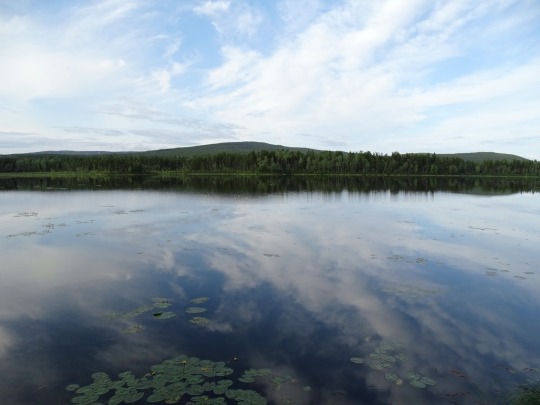
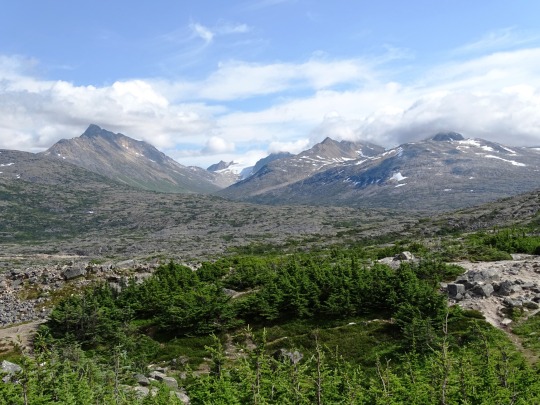
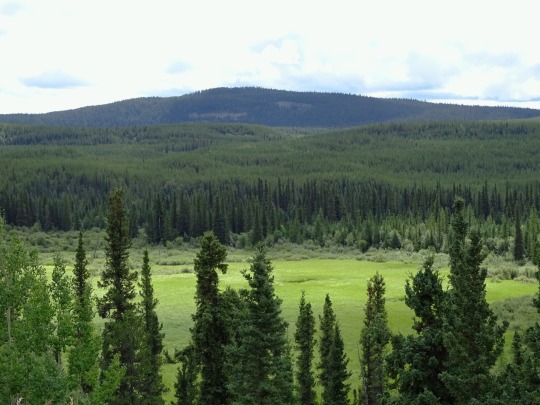
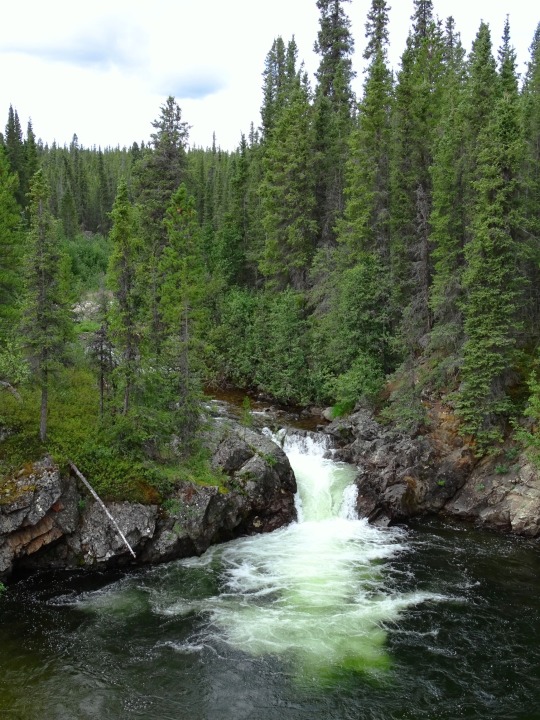
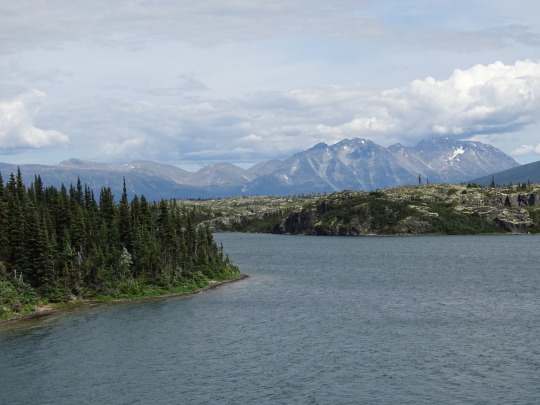
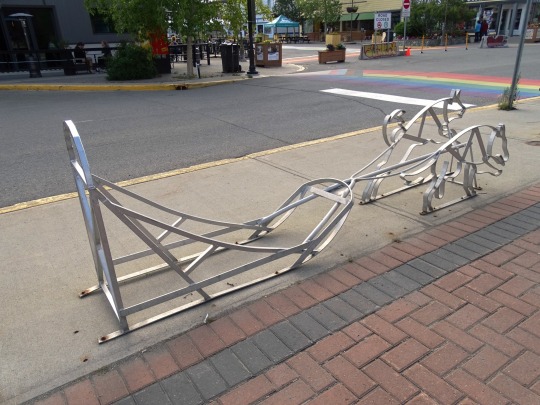
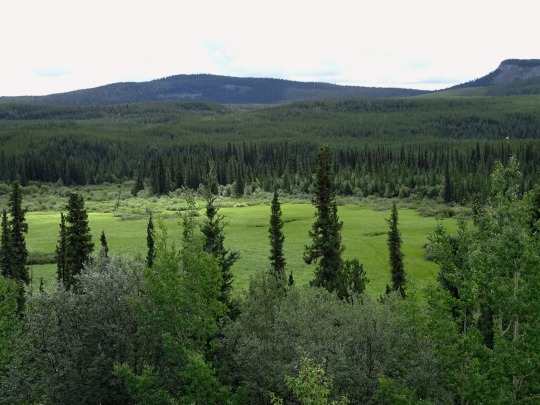

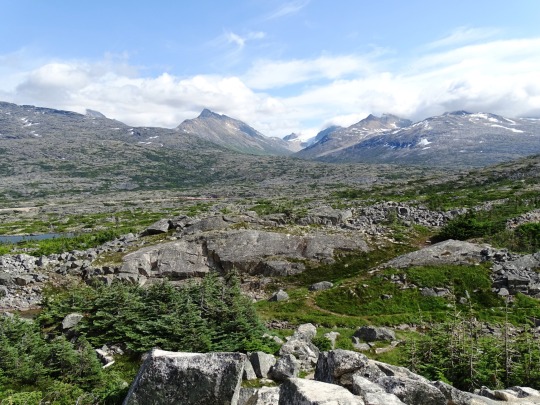





















Yukon Quest Day
Yukon Quest Day is celebrated on the first Saturday of February and this year it will be marked on February 1. It is time to go on an adventure with Siberian Huskies! Dogs have been working with humans in inland Alaska for over 10,000 years. Folklore in Alaska has mythological heroes who interacted with dogs, and some claim canines to be the ancient ancestor of the first human. During the Alaskan Gold Rush, Leonhard Seppala introduced the Siberian Husky, which was smaller than native Alaskan canines. The current sled dog’s genetic base is made up of indigenous dogs and Seppala’s Huskies. The genetic mix of the normal Yukon Quest Husky has been carefully chosen through many generations of breeders.
History of Yukon Quest
Yukon River serves as the historical highway of the north. The trail would follow the routes taken by prospects to reach the Klondike during the 1898 Gold Rush, and then to the Alaskan interior for subsequent gold rushes in the early 1900s. They despised the Iditarod Sled Dog Race’s numerous checkpoints and envisioned an endurance race in which contestants would rely on themselves and survival would be as important as speed. On the 25th anniversary of the event, Shank stated, “We wanted more of a Bush experience, a race with a little woodsmanship in it.”
The Yukon Quest was conceived in a bar in April 1983 by four Alaskans: LeRoy Shank, Roger Williams, Ron Rosser, and William ‘Willy’ Lipps. To commemorate the Klondike Gold Rush era the four proposed a 1,000-mile sled dog race from Fairbanks, Alaska, to Whitehorse, Yukon. A sled dog race from Fairbanks to Whitehorse had been discussed as early as 1976. But it wasn’t until this discussion that the Yukon Quest became more than just a concept. The race was dubbed the “Yukon Quest” by them to honor the Yukon River.
The first Yukon Quest put both race logistics and all participants to the test. In 1984, 26 teams left Fairbanks. Twenty teams arrived in Whitehorse over the next 16 days. Six teams were forced to abandon the race along the way. Sonny Lindner won the Yukon Quest for the first time, finishing in just over 12 days.
Yukon Quest timeline
1986
The First Season of Yukon Quest Starts
LeRoy Shank, Roger Williams, Ron Rosser, and William ‘Willy’ Lipps take their first journey.
2011
Fastest Racer of Yukon Quest
Allen Moore, completes the race in just eight days, setting a record that is difficult to break for years to come.
2000
The First Women to Win the Quest
Aily Zirkle of SP Kennels, an American, becomes the only woman to win the Yukon Quest.
2020
The Lowest Number of Participants
Due to a lack of sponsorships, only 15 participants are present.
Yukon Quest FAQs
How do other Canadian provinces observe Yukon Heritage Day?
Yukon Heritage Day is observed on the final Friday of February. Heritage Day, on the other hand, is observed on the third Monday of February throughout the rest of Canada’s provinces and territories.
Is Yukon Quest harder than Iditarod?
The Iditarod has tougher competition, but the Quest path is far more difficult than the Iditarod, and it’s not simply because of the mountains. It is, in fact, the Yukon River. The Iditarod only travels roughly 130 miles along the Yukon, whereas the Quest travels closer to 400 miles.
What is the prize for winning the Yukon Quest?
Mushers in the Yukon Quest 1,000 Mile International Sled Dog Race will compete for a minimum guaranteed payout of $100,000. A portion of the prize money will be distributed to the top 15 finishers.
Yukon Quest Activities
Play the other games in the Yukon Sourdough Gathering: You can enjoy other winter sports like Dog Team Derby, Ski & Snowshoe Races, Ice Skating, Ice Hockey, Snowshoe Ski Ball, Bowling, and Basketball. There are many options to pick from.
Enjoy the carnival: The Yukon Sourdough carnival also includes fireworks, BBQ, ice sculptures, dancing performances, air shows, and a fiddle tournament. It is a feast for the senses so indulge in the merrymaking.
Learn about the history and legacy of Yukon: Do not only participate in numerous activities with your family but also connect with Yukon's legacy today. The festival's main goal is to bring all Yukoners together to celebrate the end of another winter.
5 Intriguing Facts About Yukon Quest Day
The coldest competitive sport ever: Every February, during the coldest and most unpredictable months of the year, this incredible winter event takes place.
Bad weather conditions don’t hamper the race: The Yukon Quest race begins on time, regardless of the weather, and lasts between 10 and 16 days until the last team crosses the finish line.
They’ve been no missed events: Since 1984, the Yukon Quest has taken place every year.
The trail follows the historic Gold Rush: This has been followed from the turn of the 20th Century.
Each team has 14 dogs: One human and 14 canine athletes traverse some of North America's last pristine wilderness.
Why We Love Yukon Quest
We love the stamina and drive of sled dogs: Sled dogs are serious athletes and the heart and soul of this sport. They are top marathon pros and are regarded as such throughout training and competition.
It emphasizes strategy: The race relies heavily on strategy and routine. The driver of the dog sled (musher) juggles between being a coach, cook, motivational speaker, cheerleader, and companion.
It’s the only international sled dog race: What began as a chat between mushers in a Fairbanks bar has evolved into something else. It is now one of the most widely followed sled dog races in the world, as well as the only one that covers two nations.
Source
#first Saturday in February#1 February 2025#travel#original photography#vacation#tourist attraction#landmark#cityscape#architecture#landscape#Yukon#Canada#summer 2023#Yukon Quest Day#YukonQuestDay#Whitehorse#Yukon River#Wye Lake#Watson Lake#Rancheria Falls#Alaska Highway#Emerald Lake#anniversary#sculpture#street scene#Nares Lake#Carcross Desert#Miles Canyon#Teslin Lake#fireweed
2 notes
·
View notes
Text
Alaska: Igloo, Kodiak bear, Iditarod sled dog race, Denali
Hawaii: pearl harbor, pineapple
washington: Space Needle, apple, mt st helens, rainier national park
oregon: roses, lighthouse, crater lake, oregon trail, hiking
california: redwood tree, white water rafting, gold, golden gate bridge, silicon valley, yosemite national park, wine country, sierra nevada mountains, hollywood, joshua tree
nevada: silver, las vegas strip, hoover dam
idaho: gemstones, potatoes
montana: rocky mountains, glacier national park, grizzly bear, bison
wyoming: yellowstone national park, old faithful geyser, bucking bronco
utah: great salt lake, zion national park, skiing
arizona: lake mead, grand canyon national park, montezuma castle, turquoise, saguaro cactus
new mexico: pueblo, yucca plant, carlsbad caverns
colorado: rocky mountain national park, columbine flower, elk
north dakota: oil, wind energy
south dakota: crazy horse memorial, the badlands, mount rushmore
nebraska: chimney rock, bald eagle, train
kansas: tornadoes, dodge city, sunflower
oklahoma: tomato, wheat, osage shield
texas: cattle, prickly pear cactus, oil refinery, the alamo, NASA Johnson space Center
Minnesota: lake of the woods, wolf, deer
iowa: prairie grass, corn
missouri; Hog, gateway arch
arkansas: razorback hog, banjo
louisiana: crayfish, mardi gras, jazz music
wisconsin: dairy
illinois: Willis tower, tractor, lincoln
michigan: copper, iron ore, automobile manufacturing, motown
indiana: Car
ohio: Rock and Roll Hall of Fame, tires
pennsylvania: street mill, liberty bell
new jersey: constitution
maryland: blue crab
virginia: mount vernon
north carolina: wright brothers national memorial, tobacco farm, great smoky mountains national park, appalachian mountains
south carolina: fort sumter
georgia: peanuts, peach
florida: oranges, kennedy space center, alligator, everglades national park
alabama: cotton, civil rights movement
mississippi: magnolia
tennessee: country music
kentucky: horse racing
west virginia: coal
new york: apple tree, financial market, statue of liberty
massachusetts: american revolution
vermont: maple syrup
new hampshire: fall colors
maine: acadia national park, moose, lobster
And don’t make me repeat it!!!!!!!
7 notes
·
View notes
Text
The Iditarod arch has greeted Iditarod Trail race finishers for the past quarter-century. It collapsed the week before my arrival in Nome, Alaska. Wood rot, according to the local paper. Surveying the town center, it is tempting to see the collapse as a metaphor for an isolated northwestern Alaska town facing the cumulative impacts of outmigration, declining birth rates, and climate change. Dilapidated, single-story wooden homes with cluttered lawns scatter the snow-covered landscape (it was 20 degrees Fahrenheit when I visited in early May). Some wooden facades still resemble Old West saloons, suggesting Nome’s origins as a 19th century Gold Rush town, as if Tombstone had been transposed just 100 miles south of the Arctic Circle. Its face set toward the frozen Bering Sea, Nome felt unwelcoming when I arrived, out of season from the hustle and bustle of the famous Iditarod race. Appearances can be deceiving, though. If Nome seemed forbidding to me as an outsider from the Lower 48, its denizens and regular visitors were extremely welcoming. The next day, I met with Amanda Van Vliet-Snyder outside of Our Savior’s Lutheran Church, where she is the pastor. Originally from California, she moved there six years ago with her husband, an Alaska Native from a small village 200 miles away, north of the Arctic Circle. Exchanging texts with Van Vliet-Snyder before my flight from Anchorage, I learned that her husband, Jordan Snyder, was also on my small commuter plane. When I found him in the waiting area, he told me he was headed home from a family member’s graduation. As we were speaking, the graduate in question passed behind us on a moving walkway, and the cousins exchanged friendly, casual greetings. He told me this kind of encounter is common, since in Alaska flying is a fact of life. Nome is only reachable from other parts of Alaska via plane, which cultivates a friendly atmosphere between staff and regulars at Nome’s tiny airport, and makes you realize the TV show Northern Exposure was probably closer to life than many viewers may have appreciated. Jordan drove me to my hotel, giving me an informal tour of Nome’s landscape and local characters on the short drive. Despite its unique history and atmospheric surroundings, in many ways, Nome is any other small town. But the remoteness is still an issue for many. “A lot of congregations are just feeling, I think, kind of frustrated that there’s no pastors that want to stick around,” said Van Vliet-Snyder, “because it’s not really an easy place to live.” She pastors a small congregation, and a big part of her job consists of traveling to the remote places, like the fishing island of Shishmaref, that lack pastors of their own. It’s challenging work, complicated by a larger dwindling of the Evangelical Lutheran Church of America (ELCA) nationwide. The situation is a far cry from the denomination’s heyday in Nome, although a Lutheran legacy remains in two visible Nome institutions: the Lutheran Church and Christian radio station KICY.
…
The Lutherans were one of several Christian denominations tapped by Jackson to bring Christianity and traditional American values to Alaska Natives. “Carved up” is an often-used phrase to describe Jackson’s attempted cultural overhaul of the territory, but it’s hard to think of anything more apt. A map from Jackson’s tenure, included in a congressional report from Alaska on his reindeer scheme (of which, more to come), illustrated how different denominations had different areas of responsibility. The Swedish Lutherans had Nome, with Presbyterians, Congregationalists, Methodists, and Swedish Evangelicals operating in the territory right next door. The Episcopalians were even farther north, and the Moravians a few hundred miles to the south in the Yukon Delta. Since the relationship between religious indoctrination and public education was more porous back then than it is today, it is perhaps unsurprising that a general agent for education would concern himself with this sort of thing. What may be less intelligible is why this information was included in a congressional reindeer report, or what a congressional reindeer report was supposed to be.
…
When he arrived in Unalakleet, Karlsson had already done a stint in Central Moscow Prison after a failed attempt to convert Russia. His presence in the Native Alaskan village on the Bering Sea was the consequence, a second foray into bringing Pietism to Russia, this time working westward beginning with Indigenous Siberians. But Karlsson soon switched his focus to Indigenous Alaskans after hearing there was a need for missionaries there. He had a rocky start, but Karlsson soon managed to establish a school for Native children (“the children all got new names and clean clothes and promised to wash their faces each morning,” Karlsson wrote in his journal on the first day of class). He was joined by more missionaries two years later, who helped establish a children’s home, and Karlsson started to garner financial support from Mission Covenant Church leaders in the United States. Karlsson’s missionary still faced challenges: financial challenges in the form of a depression in the Lower 48, theological challenges from the long-present Russian Orthodox Church, and moral challenges from the Gold Rush boom in Nome. Since the discovery of gold in the late 1890s, the population of 200 had ballooned by a factor of 100 by 1901. No less a personage than Wyatt Earp soon established a saloon in Nome to accompany the various other bars and brothels that had sprung up there to serve the new clientele. All the same, Karlsson’s efforts bore fruit. “In 1890, there probably was not a single Christian Inupiaq Eskimo,” according to a 1994 essay by anthropologist Ernest S. Burch Jr. “Twenty years later, there was scarcely an Inupiaq who was not a Christian.”
…
While KICY reached the original Covenant missions that Karlsson and his successors had established, their signal also reached hundred miles away. Indeed, the U.S. government received a letter from the Soviet government complaining about KICY, which indicated to the ECC missionaries that they had finally attained Karlsson’s dream of evangelizing Russia. But devotional programming was only one part of KICY’s mission. At the time it was founded, many villages still lacked private home phones; it was not uncommon for a village to have one public phone for everyone. A nightly program called the Ptarmigan Telegraph became a vital communication link. According to the book on KICY’s history of the same name, “The Ptarmigan Telegraph (pronounced ‘tarmigan’) invited listeners to call or write in messages for family members, work colleagues, or distant relatives. These brief comments would then be read on the air so that the intended recipient would hear and respond in an appropriate manner.” The news and weather updates meant that, according to author Greg Asimakoupoulos, “[f]or the first time, listeners had up-to-the-minute forecasts and warnings of approaching storms, severe temperature drops, and low-pressure fronts moving in from the Bering Sea.” In a place scattered with remote villages where transportation was a challenge, such information could mean the difference between life and death.
…
But the ELCA still has clergy, and a tech evolution in rural Alaska 2023 has complicated their mission. That’s when Starlink first appeared in the state and in 2021, Alaska’s largest telecommunications company brought fiber internet to Nome. Until recently, provider caps on data usage were common in rural Alaska. As broadband access has increased and data limits have decreased, Van Vliet-Snyder told me how technology has created challenges as she works to bring up the next generation in the faith. She said that she had had to cancel the church’s summer camp this year, which she estimated has been running for about 60 years, when the church recognized Nome’s young people were underoccupied in the summer. The church purchased some land near Salmon Lake, Alaska, to start a youth camp. “Gorgeous place,” Van Vliet-Snyder said, where she had led a junior high camp and a high school church camp the previous summer. She brought the weeklong junior high and high school church camps back in 2023, after COVID suspended them in 2020. But something was different. At one time, the church had attracted kids and pastors from around the Seward Peninsula. But Van Vliet-Snyder said that she partnered with only one other pastor for the revived camp, and he in turn could wrangle just two adult chaperones. She ended up calling her own husband in a panic to take time off work and come lend a hand with the logistics of feeding and entertaining the campers. “The thing was, the kids didn’t want to be there,” she said. “The kids that were from villages that have technology were so bored. Because our camp has no electricity, no running water, no cell, you know, no data, no Wi-Fi.” A proposed Alaskan baseball game deteriorated into a fight for the limited outlets to plug in their devices. “They all refused to get out of the car,” Van Vliet-Snyder said. “They all had their devices loaded up, and they all downloaded stuff that they can do online.” A trip to some nearby hot springs didn’t yield much more interest. By contrast, she said, the kids without electronics “were having a grand old time.”
…
KICY General Manager Patty Burchell sees it differently. “Radio is still king here,” she said. “For six weeks of the summer, people are out at their fishing camps. So the culture here is still very much subsistence.” Shipping costs drive up prices in rural Alaska, and according to the state’s labor statistics, unemployment in the Nome census area in July 2023 was 6.8%, almost twice the national average. Because locals in the region still augment their groceries with seasonal fishing, moose hunting, and even berry picking, they still rely on radio when they go out. Internet is “spotty” (a truth I can personally verify), and a 2023 Federal Communications Commission report stated that Alaska ranked 55th out of 56 states and territories in broadband availability coverage for fixed and mobile service, even after a 2016 FCC program to expand broadband access over 10 years. And while more people in and around Nome are adopting Starlink, it can be expensive to get started. According to a 2023 Nielsen study, Alaska remains one of the top AM-listening states in the nation, ranking seventh for its percentage of AM radio listening. Although Burchell said there is a radio “on the table in every home,” KICY also broadcasts online, as well as over AM and FM channels. It is one of two radio stations in Nome (the other, KNOM, is affiliated with Catholic missionary work), and it operates out of a small, unassuming building, not far from the World’s Largest Gold Pan at the center of town. KICY is no longer staffed by career missionaries as it was at its founding. Today, the station is operated by part-time staff and by volunteer missionaries who raise their own support to come work there, usually for one year. Covering the Iditarod race is a big part of their job, but so is Native-language programming featuring locally produced Native singing, and a Russian-language program that reaches Siberia.
…
But Joseph is not that different from other young adults from the Lower 48. A conference on outmigration from the state at University of Alaska Anchorage concluded that the state’s demographic problem isn’t young people leaving the state, but that the ones who leave aren’t adequately replaced by new arrivals in their 20s and 30s. Research chief at the Alaska Department of Labor and Workforce Development Dan Robinson said that for the past 12 years, more people have left Alaska than moved in, something he said was unprecedented. Some of the demographic change is due to college-age Alaskans opting to attend college in the Lower 48. But Robinson thinks there are other factors keeping young people from moving to Alaska—a reduced military population at Joint Base Elmendorf-Richardson, for one thing. The other factor is less quantifiable—“Alaska is an adventurous kind of place,” Robinson said. It would appear that the call of the wild that has long beckoned young people north no longer holds the same allure.
…
The Seward Peninsula Indigenous culture “just loves music, loves singing,” said Burchell, “And from the early days translated hymns into their language, as well as created their own music, sacred music.” Even today, she said musical get-togethers still happen in the spring, “when a village will invite the three or four surrounding villages and anybody else who wants to come, to come in for a weekend of teaching, Bible teaching, and testimony, and song.” These gatherings occur in late winter and early spring, when longer days and a hard snowpack makes snowmobile travel over the hundreds of miles between villages doable. In the summer, there are no roads, and around the Norton Sound, there are no rivers to facilitate travel. Burchell said KICY sends representatives to record the testimonies and music for later broadcast, and a remote unit to broadcast the evening services live. The hymns, many of which are translated into Native languages, have a unique sound all their own. Burchell describes it as reminiscent of Southern gospel with a “distinct flavor.” Southern gospel is popular and in heavy rotation at KICY, she said. But Van Vliet-Snyder said there is little in the way of syncretic pre-Christian practice mixed with Christian worship at her church. It is a legacy of Sheldon Jackson’s twin senses of cultural supremacy and agrarian paternalism. Unlike the Russian Orthodox Church’s earlier presence in Alaska, which was a more-or-less organic process that embraced cultural syncretism, the Lutheranization of the Seward Peninsula had a more compulsory edge. Van Vliet-Snyder’s husband told me that his own last name, Snyder, was given to his Native Alaskan forbears by missionaries.
…
Her challenge, however, is not to present herself as a new kind of progressive white savior, a 21st-century Sheldon Jackson trying to reform the Indigenous people according to her own view of what right looks like. “Who am I to come in and say, ‘Let’s look at your Native values, and then look at what the missionaries were teaching you back then, and then look at how they came in and completely changed the way you think’”? said Van Vliet-Snyder. “How can I be a learner? How can I not be seen as, ‘There’s just another white person who’s going to come and tell us about her white Jesus.’” She says her congregation post-COVID is only about 40 people, and “the next generation of kids, they’re like, ‘eh, whatever.’” But she said it’s still the place Native Alaskans turn for funerals or in an emergency, and Our Savior’s Lutheran Church is a popular place of worship for local Native Alaskans on Christmas Eve. “They still see that as their church,” said Van Vliet-Snyder, “even if we don’t see them every week.”
#tablet magazine#maggie phillips#nome alaska#sheldon jackson#alex karlsson#read the whole thing#kicy#alaska#iñupiat#lutheran church#elca#religion
3 notes
·
View notes
Note
so the iditarod. any fun facts?
the Iditarod Trail as we know it was originally a mail trail. in the far north, dogs have been used as freight runners since precontact times by alaska native peoples like the inupiat (in fact, the name for the "malamute" sled dog breed comes from the name for a group of the inupiat, the malemiut who lived on the seward peninsula.
as a draft animal dogs are, pound for pound, stronger and faster than horses, and in an environment like the alaskan interior a carnivore is much easier to feed than a hay-eating herbivore. they are also much better at navigating the winding, slippery, and often difficult trails -- there are places that snowmachines can't go, to this day, but dogs can. old mail trail runners would have teams of twenty or more dogs, hauling cargo like gold and mail and people through the interior. the town of iditarod itself, although now largely a ghost town, once was larger than anchorage!
the history of the iditarod race starts in the winter of 1925 when nome, a town on the icebound bering sea, suffered a diphtheria outbreak. without serum and with no way to get it there by other means -- icebound, so no boats, and the only pilot who could make the trip was on the other end of the continent -- they organized a trail relay, seven hundred miles long. it took them six days.
fifty years later, with mushing considered a dying sport, they decided to resurrect the iditarod as a race, anchorage to nome, one musher and fourteen dogs. it's about a thousand miles long -- there's two different routes, which alternate every year.
uh list of fun trivia below the cut so i don't make this TOO long
specifying the two routes thing: the routes only diverge at about the halfway point and reconnect at about the three-quarter mark, at the checkpoint right before they hit the bering sea.
trail dogs wear little booties, not because their feet get cold but to protect them from things like fallen branches, and other hazards on the trail. mushers can go through hundreds of booties in a race.
the last musher to complete the iditarod is called the "red lantern," which is a tradition that apparently started as a joke and stuck. you may have heard of musher apayauq reitan, who made history as the first out trans person to run the iditarod? she was the red lantern in 2022!
the current general frontrunners of the iditarod are father and son mitch and dallas seavey. dallas is one of two people to have won the race five times.
four people have won four times, including susan butcher, one of the first women to win.
race times can vary HUGELY depending on year and musher. the records are about eight and a half days, but it's not uncommon for people to take two weeks. libby riddles, who won in 1985, had a winning time of 18 days!
24 notes
·
View notes
Text

March 4 - bump. Moguls on the trail through the Iditarod trail's Farewell Burn in March 2022.
3 notes
·
View notes
